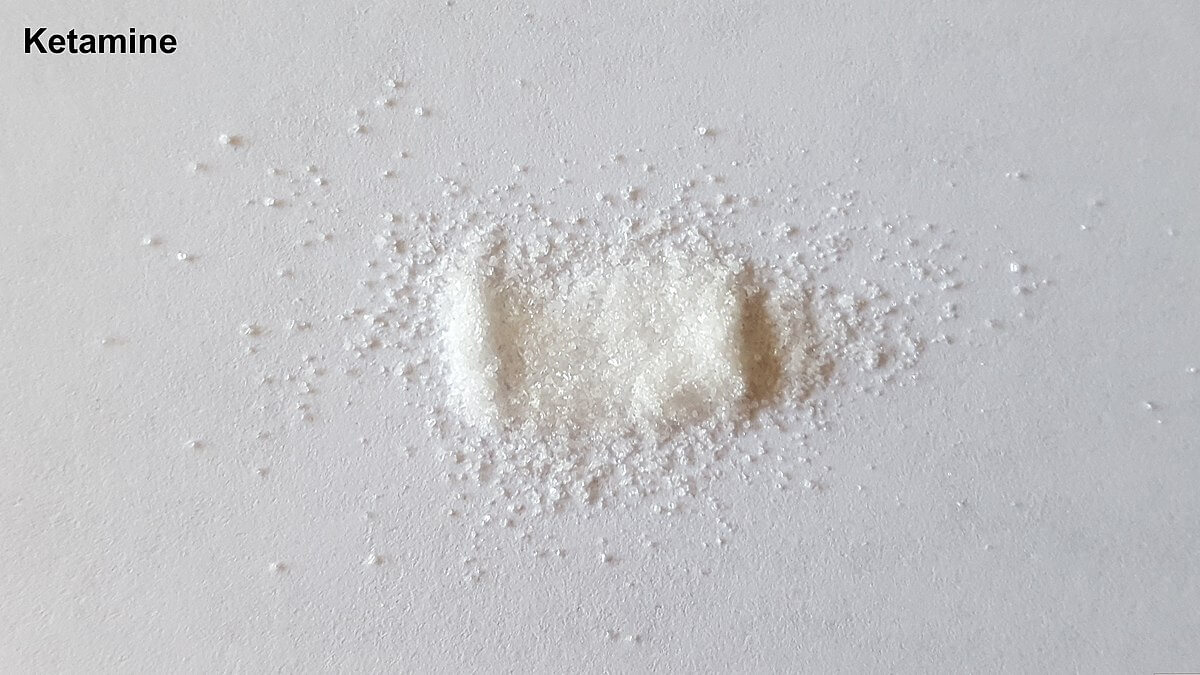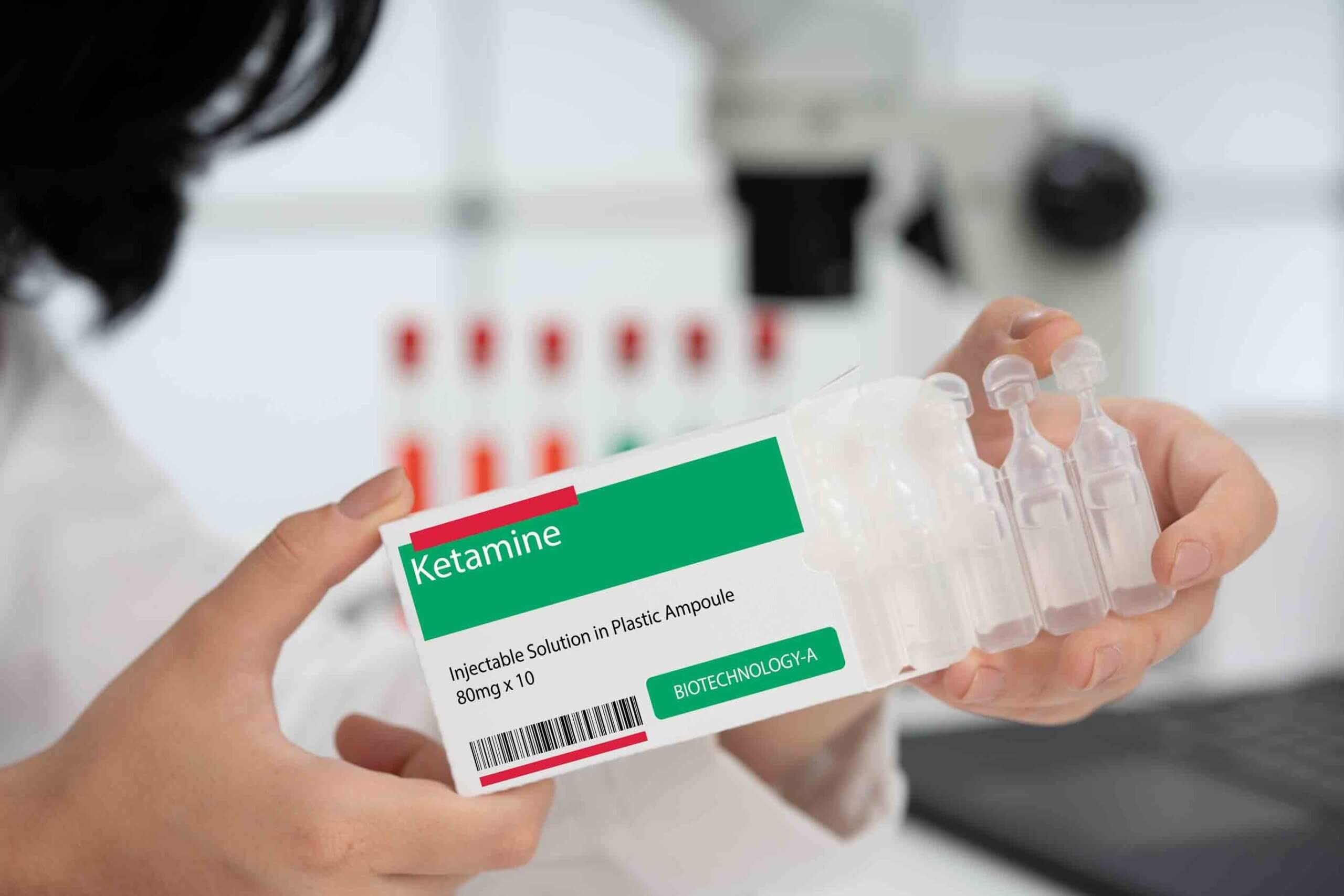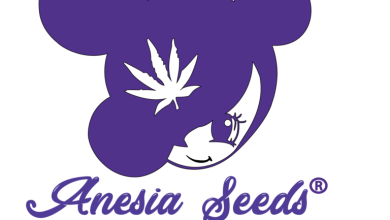therapeutic use and main effects- Alchimia Grow Shop

Ketamine (C13H16NClO) is a substance that has attracted considerable interest in both the medical community and the general public due to its wide range of applications and effects. Originally developed in the 1960s as an anesthetic for human and veterinary use, ketamine has been a mainstay in emergency medicine and pain management. However, its profile has expanded significantly in recent decades, finding new applications in the treatment of psychiatric disorders such as resistant depression and post-traumatic stress disorder (PTSD).
Additionally, and this is probably why the name sounds familiar to you, ketamine has also gained notoriety as a recreational drug, known for its powerful dissociative and hallucinogenic effects. Today we invite you to learn more about ketamine, addressing what it is, how it is produced, and of course examining its impact on the body both in the short and long term. We will explore the benefits and risks associated with this substance, providing a solid foundation for understanding its role in contemporary medicine and its public health implications.
What is ketamine?
Ketamine is a chemical classified as a dissociative anesthetic. This type of anesthetic induces a state in which the patient feels disconnected from their body and environment, which can result in hallucinatory experiences. Ketamine was developed in the 1960s as a safer alternative to phencyclidine (PCP), an anesthetic with severe side effects.
In 1962, American chemist Calvin Stevens first synthesized ketamine while working at Parke-Davis Laboratories. The substance underwent clinical testing, being injected into humans for the first time in 1964 by Dr. Edward Domino, and in 1970, it was approved by the FDA (United States Food and Drug Administration) for use in humans and animals as an anesthetic. Its relatively favorable safety profile, especially in terms of maintaining respiratory and cardiac functions, quickly made it popular in fields like emergency medicine and surgery.
As we have already seen in the introduction, over the years, and leaving aside its known and proven properties as an anesthetic, research has led to the recognition of other fields where this substance can be useful, such as the treatment of pain or psychiatric disorders such as depression. Without a doubt, in the coming years, we will know more results and conclusions about its application in these areas.

How is ketamine produced?
Ketamine is a compound considered a synthetic drug, that is, it is not found in Nature and several steps are necessary in the laboratory to obtain it. Thus, the production of ketamine is a complex chemical process that requires both controlled conditions and specialized equipment to ensure the purity and safety of the final product…it is not as easy as cutting up a plant or mushroom and letting it dry for a few days! Broadly speaking, this is the production process followed in the laboratory to obtain ketamine:
- Precursor Synthesis: The first step in ketamine synthesis involves the preparation of the necessary chemical precursors. One of the most important precursors is 2-chlorobenzylamine hydrochloride. This compound is the starting point for the synthesis of ketamine.
- Formation of the Intermediate Compound: 2-Chlorobenzylamine hydrochloride undergoes a series of chemical reactions to form an intermediate compound. This process generally includes the reaction of this precursor with other chemical reagents under controlled conditions of temperature and pressure.
- Cyclization Reaction: The intermediate compound obtained in the previous step is subjected to a cyclization reaction. This reaction involves the formation of a chemical ring, which is an essential part of the ketamine structure. In this step, specific catalysts and conditions are used to facilitate the correct and efficient cyclization of the intermediate compound.
- Purification: The crude ketamine produced after the cyclization reaction contains impurities and byproducts that must be removed. This purification process is generally carried out using chromatography and crystallization techniques. These techniques allow pure ketamine to be separated from impurities, ensuring that the final product meets the quality standards necessary for medical use.
- Formulation: Once ketamine has been purified, it is converted into a form suitable for administration. This may include conversion to its salt form (e.g. ketamine hydrochloride) to improve its stability and solubility in water. Ketamine can be formulated in various forms, such as injectable solutions, liquids for infusion, or powders for reconstitution.
- Quality Control: The final product undergoes rigorous quality control testing to ensure its purity, potency, and safety. This includes chemical analysis and microbiological testing to detect any residual contamination or impurities. Additionally, the physical and chemical properties of ketamine are verified to ensure that it meets established specifications.
- Packaging and Distribution: Once the product has passed all quality control tests, it is packaged under sterile conditions and prepared for distribution. Packaging must comply with health and safety regulations to ensure that ketamine reaches end users without degradation or contamination.

Main uses of ketamine
- Anesthesia: Ketamine is widely used as an anesthetic in surgical and medical procedures in both humans and animals. It is especially useful in emergencies, where its ability to provide anesthesia without severely depressing respiratory and cardiovascular function is crucial.
- Pain treatment: Ketamine is used as an analgesic in the treatment of chronic and acute pain. Its ability to relieve neuropathic pain and pain associated with injuries and surgical procedures makes it valuable in various medical settings.
- Psychiatric disorders: In recent years, ketamine has emerged as a promising option for the treatment of treatment-resistant depression and other mood disorders, such as post-traumatic stress disorder. Administration of ketamine in subanesthetic doses has been shown to provide rapid relief of depressive symptoms in patients who have not responded to other treatments. Similar effects have also been demonstrated with psilocybin.
Non-medical uses of ketamine:
- Recreational use: Ketamine is also used as a recreational drug due to its hallucinogenic and dissociative effects. Users seek the experience of disconnection from reality that ketamine can induce, often known by its users as “K-hole”, although its recreational use is associated with significant risks, including psychological and physical problems. Given the rapid increase in consumption in non-medical settings, the DEA reclassified ketamine as a class III controlled substance in 1999.
- Scientific research: Ketamine is the subject of study in various areas of medical and neuroscientific research. Its impact on the brain’s NMDA receptors and its potential to treat a variety of neurological and psychiatric conditions make it a topic of continued interest. The investigation does not stop!
As you’ve seen, ketamine is a versatile substance with a history of significant medical use and increasing importance in the treatment of psychiatric disorders. Its controlled production and diverse applications position it as a valuable tool in modern medicine, although its potential for abuse underscores the need for careful, regulated, and responsible management.

Effects of ketamine
Ketamine is known for its various effects on the body, which can vary depending on the dose and route of administration. Its effects can be classified into:
Primary effects of ketamine
- Anesthetics: Ketamine induces a state of dissociative anesthesia, in which the patient is unconscious and does not feel pain, but may have their eyes open and appear conscious. This state is useful in certain surgical and medical procedures.
- Analgesia: Ketamine provides pain relief, both acute and chronic, by inhibiting NMDA receptors in the brain and spinal cord. This makes it effective in the management of postoperative and neuropathic pain.
- Antidepressants: At subanesthetic doses, ketamine has been shown to have rapid antidepressant effects in people with treatment-resistant depression. These effects can appear within hours and last several days.
Ketamine Side Effects
- Psychedelic and dissociative: Ketamine can induce psychedelic experiences, characterized by visual and auditory hallucinations, distortion of time and space, and a feeling of disconnection from the body (dissociation).
- Cardiovascular: May cause an increase in blood pressure and heart rate, which may be risky in patients with preexisting heart conditions.
- Respiratory: Unlike other anesthetics, ketamine does not significantly depress respiration, making it useful in situations where maintaining respiratory function is crucial.
- Neurological: Effects such as dizziness, confusion, drowsiness, and altered motor coordination are common after ketamine use.
- Nausea and Vomiting: These effects are common after ketamine administration and can be bothersome to patients.
- Agitation and Confusion: Some patients may experience agitation, anxiety, or confusion after coming out of ketamine-induced anesthesia.
- Perceptual Alterations: Distortions in the perception of the environment and time may continue after administration, causing disorientation.

Long-term effects of ketamine
- Cognitive and psychiatric problems: Long-term use of ketamine, especially in recreational contexts, can lead to memory problems, difficulty concentrating, and other cognitive problems. Cases of anxiety, depression, and personality disorders have also been reported.
- Dependence and abuse: Although ketamine has a relatively low addictive potential compared to other opioids and stimulants, frequent recreational use can lead to psychological dependence and abuse.
- Urinary damage: Chronic ketamine use can cause ketamine cystitis, a painful condition that affects the urinary bladder, causing symptoms such as painful urination, urgent need to urinate, and hematuria (blood in the urine).
- Liver damage: Cases of liver damage have been reported in chronic ketamine users, although this is less common.
- Neurotoxic effects: There is concern about the potential neurotoxic effects of long-term ketamine use, although human studies are still ongoing to better understand these risks.
You see, ketamine has a wide range of effects that can be beneficial in controlled medical settings, but also carry significant risks, especially when used improperly and without the supervision of a medical professional. Its effect profile includes anesthetic, analgesic, and antidepressant properties, as well as potential side effects and long-term risks that should be carefully considered by both medical professionals and users.
The articles published by Alchimiaweb, S.L. are reserved for adult clients only. We would like to remind our customers that cannabis seeds are not listed in the European Community catalogue. They are products intended for genetic conservation and collecting, in no case for cultivation. In some countries it is strictly forbidden to germinate cannabis seeds, other than those authorised by the European Union. We recommend our customers not to infringe the law in any way, we are not responsible for their use.




